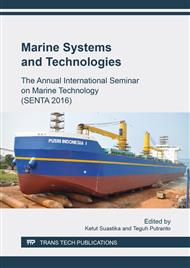p.3
p.10
p.18
p.27
p.37
p.44
p.53
p.64
Implementation of Life Cycle Assessment Method (LCA) and Analytical Hierarchy Process (AHP) to Determine the Development of Recycling Unit of Waste Water in Grati CCPP PT Indonesia Power up Perak Grati
Abstract:
Waste water result from operating activities of Grati Combined Cycled Power Plant (CCPP) is significant amount and has potentially to be reutilized. A recycling unit as the pilot project has been applied in Grati CCPP PT Indonesia Power UP Perak Grati for capacity 4 tons/hour of service water product. Development plant of Grati CCPP up to year 2018 will produce more amounts of waste water, and potentially increase the pollution load in the unit area.Considering the use of alternative development for unit recycled waste water effluent from the Waste Water Treatment Plant (WWTP) has implications to the environmental and cost aspects, therefore a proper assessment to decide the alternative is needed. Proposed method of Life Cycle Assessment (LCA) is to measure the impact to the environment. And the Cost Benefit Analysis (CBA) is to measure the economic criteria. To integrate the results of the two methods, it is used and calculated by using Hierarcy Analytical Process (AHP).The result of the study about the environmental impact and economic analysis, the development of the recycling unit is required to process all waste water produced by power plants. Focus group by experts in power plant operation using AHP is based on the results of SimaPro 7.0 and CBA. The most beneficial result is with a single score of 0.2314 Pt / 1 ton of water service, the payback period of 2.5 years, 37.5% IRR and NPV US$ 88,577.23 and the MMF-RO unit for total capacity of 14 tons/hour has become the most alternative of development.
Info:
Periodical:
Pages:
18-26
Citation:
Online since:
January 2018
Authors:
Price:
Сopyright:
© 2018 Trans Tech Publications Ltd. All Rights Reserved
Share:
Citation:


